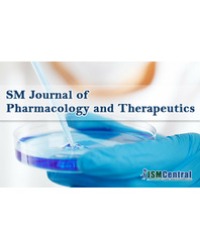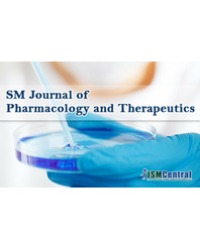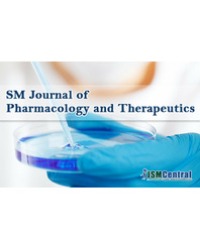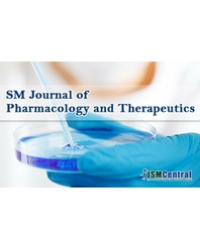
Exosomes
Intercellular communication is widespread physiological phenomenon, which has great significance for growth, differentiation, and apoptosis in organism
Jian-ye Zhang*


Intercellular communication is widespread physiological phenomenon, which has great significance for growth, differentiation, and apoptosis in organism
Jian-ye Zhang*

In this work, potentiometric and calorimetric measurements were carried out in aqueous NaCl solutions at different temperatures (283.15 ≤ T / K ≤ 318.15) and ionic strengths (0 < I / mol dm-3 ≤ 3.0), to study the interaction of Ca2+ and Risedronic Acid (RA), a drug used for the treatment of various bone disorders and belonging to the class of Biphosphonates (BP). The experimentally determined speciation model of the Ca2+/Risedronate system consists of four species, namely the neutral CaH2 L and Ca2 L and the negatively charged CaHL- and CaL2-. Calorimetric experiments allowed us to determine the thermodynamic properties of the various species, and to calculate formation constants at temperature different than 298.15 K. All the species (except the Ca2 L) resulted exothermic and the main contribution to the stability is entropic in nature. The aim of the paper is to predict the influence of the risedronate on the speciation of Ca2+ in various simulated biological fluids as human blood plasma, urine and saliva.
Bretti C¹, Cataldo S², Cigala RM¹, Lando G¹, Pettignano A² and Sammartano S¹

Chronic Venous Disease (CVD) of the lower extremities is a complicated disorder that affects the productivity and well-being of millions of people worldwide. Management requires careful differential diagnosis and a systematic long-term multidisciplinary care effort directed toward realistic goals within the context of the patient’s lifestyle.
Patients suffering from any class of the Clinical, Etiological, Anatomical, Pathophysiological (CEAP) classification of Chronic Venous Disease (CVD) may be symptomatic (C0s-C6s). Leg heaviness, discomfort, itching, cramps, pain, paresthesia and oedema (C3) are the most frequent manifestations of CVD and a major reason for medical consultation. The standard treatments for venous disease of the lower limb include compression bandaging and stocking as well as surgical removal of varicose veins. Drugs for the venous system were initially called phlebotonics as they were believed to act on venous tone. They are still largely used in the symptomatic treatment of CVD and to make patients more comfortable.
Phlebotropic drugs, in their modern form, are aimed at a wide range of processes. They are naturally occurring, semi-natural or synthetic substances, some of them combining two or more active principles to improve the efficacy.
Most of these belong to the flavonoid family (such as Diosmine, Esperidine, Troxoerutine, Oxoerutine, etc) and others are capillary protecting substances as Escine, Centella Asiatica, and Bilberry Anthocyanosides. Flavonoid drugs have been widely used in the management of the symptom of venous disease for many years and have recently been studied in some detail to assess their effects on the microcirculation.
Phlebotropic drugs are widely prescribed and marketed in Italy, France, Germany and other parts of Europe.
Their mechanisms of action vary, but their main property is activation of venous and lymphatic return. The effects of Phlebotropic drugs on physiological parameters such us venous tone, venous hemodynamic, capillary permeability and lymphatic drainage have been studied by many well-conducted randomized, double-blind clinical trials. In particular, Phlebotropic drugs participate in the hemodynamic re-equilibrium of the microvascular system consisting in reducing capillary permeability by increasing its resistance with the consequent reduction of interstitial fluid.
A series of drugs have been recently introduced for the treatment of severe CVD (CEAP 4/5/6), as co adjuvant. They are antithrombotic drugs (Sulodexide, Mesoglycan, Heparan Sulfate, Defibrotide) and vasodilators (pentoxifyllin and prostaglandin E1) for their specific action on endothelial alterations and blow flow patterns, and on micro thrombi and their oxygen barrier effect.
Pier Luigi Antignani*

Type-1 Diabetes mellitus is an autoimmune disorder that comprises around 10% of the current diabetic population. The only mode of therapy for type-1 diabetes is to administer insulin. However, it is becoming very challenging to control the homeostasis between insulin and glucose levels. Islets transplantation has the potential to become a cure for diabetes. However, primary non-function of the islet graft immediately following transplantation due to apoptosis triggered by hypoxia and pro-inflammatory cytokines is one of the major obstacles for the success of islet transplantation. Gene therapy can be beneficial for improving the outcomes of islet transplantation. This review summarizes the challenges facing islet transplantation and the various viral vectors that can be used to possibly overcome those challenges.
Ravikiran Panakanti*

A procedure for daily rectum emptying in aged subjects was recently proposed [1]. The quantitative aspect of such a procedure remained, however, to be considered. The present report provides such information
Willy J Malaisse*

Introduction: Pharmacists as the link between the patient and the physician to optimize drugs’ use play an important role in public health and the role of the pharmacist in giving information and prevention medical errors is undeniable. In this regard, the evaluation of the scientific and practical skills of pharmacists is of great importance. The aim of this research is to know how many pharmacists have been successful in performing their duties and providing medical services and what factors can influence this issue.
Method: In this study, 120 pharmacies were selected to be assessed on their performance(giving information about Drug use, Drug interactions, Maintenance drug, etc.) in dealing with the prescription of the wrong medication(that is took by an unknown person ) as well as the implementation of trade rules.
Results: The results of this study indicate that pharmacists were present only in 65.83 percent of pharmacies of the whole sample. Although a small percentage of pharmacists were active in scientific fields, 63.30% of prescriptions are delivered by the staff. Moreover, patients were informed about 7.5% of drug interactions and 2.5% of side effects of drug and 19.16% of drug maintenance conditions. However, the accuracy of orders written in compliance with prescribed medication was 100%.
Discussion: Although the improvement of pharmaceutical care is of interest to all pharmacists , this study has shown that errors in drug delivery, or failure to provide the necessary explanations to the patient is still happening and obviously this issue must be regarded deeply.
Kaveh Eslami¹, Soheila Alboghobeish²* and Behzad Sharif Makhmalzadeh³

Various pharmacological rat models are used for anticancer activity estimation. The present study deals with culturing of Lactobacillus Acidophilus (LAB) in the pasteurized milk of cow and buffalo and estimating the anticancer activity. The lab was grown at 370C, for 24 hours
Abhinandan Patil¹*, John Disouza¹ and Shivaji Pawar¹,²